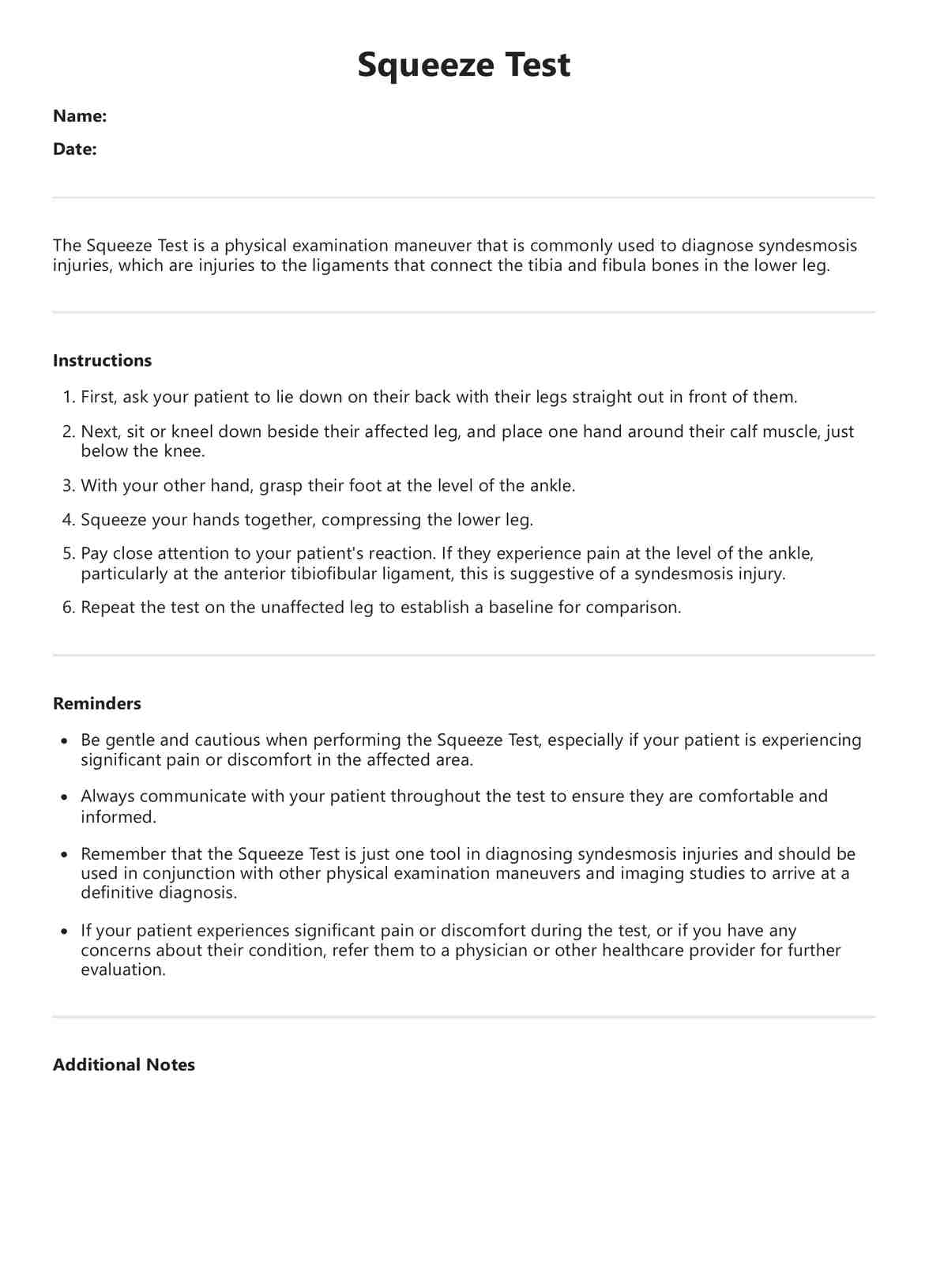To perform the Squeeze Test, you will need to have the patient lie down in a supine position and place their foot on your leg. You will then apply gentle pressure with both hands around the patient’s ankle, squeezing in a circular motion. If you feel any instability in the joint during the test, this may indicate a syndesmosis injury.

Squeeze Test
Learn about the Squeeze Test and how it can help diagnose syndesmosis injuries. Get access to a free PDF template and example.
Squeeze Test Template
Commonly asked questions
The Squeeze Test is a non-invasive and cost-effective assessment tool that can be used to diagnose syndesmosis injuries quickly and accurately. It can also be used to evaluate whether a patient has sufficiently recovered from their injury and is ready to return to play. Additionally, it helps healthcare providers track their patient's progress over time.
The Squeeze Test measures the stability of a patient’s ankle joint, which can help healthcare professionals diagnose syndesmosis injuries.
EHR and practice management software
Get started for free
*No credit card required
Free
$0/usd
Unlimited clients
Telehealth
1GB of storage
Client portal text
Automated billing and online payments











